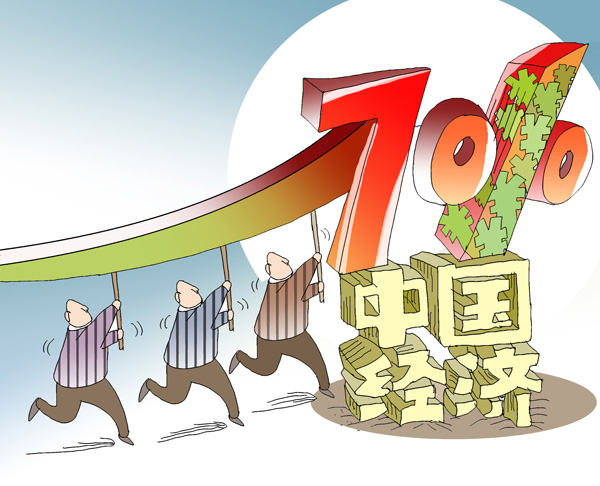Scholars: China adjusts to 'new normal' for economic growth

Central Economic Work Conference forecasts China’s economic growth will remain stable by emphasizing efficiency.
On Dec. 11, China's leaders and senior officials concluded the three-day Central Economic Work Conference, a crucial meeting that will set the tone for economic policies in 2015.
At the meeting, it was pointed out that the Chinese economy has entered a phase known by the shorthand "new normal," which is characterized by more advanced forms, complicated divisions and a reasonable structure.
Moderate growth
The term “new normal” first appeared during President Xi Jinping’s inspection tour to Henan Province this May. The term was elaborated upon during APEC, and it was brought up again in the Central Economic Work Conference.
The “new normal” describes a shift in Chinese economy from high-speed growth to a slightly slower pace. The nation will change its growth model from quantity and speed to quality and efficiency.
Emphasis will be placed on improving rather than expanding production, and new engines will drive growth instead of traditional sectors.
Since China’s reform and opening up in 1978, Chinese economy averaged close to 10 percent annual growth, and between 2003 and 2007, it was more than 11.5 percent.
According to a report released by the National Academy of Economic Strategy under the Chinese Academy of Social Sciences (CASS) on Dec. 5, China’s economy is likely to grow by 7 percent this year.
Hu Naiwu, a professor of economics at Renmin University of China, said that slower economic growth is not due to incompetent guidance at the macroeconomic level. Instead, it is a reflection of the fundamental laws of economic development.
“China’s economic ‘new normal’ will remain for the long term, longer than 3 or 5 years, because it is line with the law of three industrial evolutions,” Hu said.
Sustainability
Continuity and stability are the keys to macroeconomic policies, according to the statement released by the Central Economic Work Conference.
There has been no change in the overall policy stance for 2015 because the government will maintain a “proactive fiscal policy and prudent monetary policy.” However, the proactive fiscal policy should be stronger, suggested Zhang Zhuoyuan, a famed economist and a research fellow from the Institute of Economics at CASS.
Zhang said that maintaining a steady economic growth still remains the priority of China’s economy.
Chen Dongqi, vice-president of the Academy of Macroeconomic Research under the National Development and Reform Commission, said that proactive fiscal policy in 2015 will lead to an increasing deficit ratio, but it probably will not exceed 2.5 percent, and it is expected to remain within a manageable range.
Chen said the rising deficit ratio might be a good sign for government spending and infrastructure construction. However, infrastructure investment spurred by fiscal policies will continue to decrease in all aspects of fixed-asset investment while social investment will go up.
Monetary policy may also change, such as further reductions of interest rates, Chen added.
Structural adjustment
According to the statement, “The focus of economic growth will be shifting from quantity and speed to quality and efficiency, with an emphasis on structural adjustment.”
Scholars suggested China should expand domestic demand in structural adjustment, optimize the spatial pattern of economic development and continue overall regional development strategies. They said a special focus should be on the “One Belt and One Road” project as well as the integrated and coordinated development of Beijing, Tianjin and Hebei province along with the Yangtze River economic belt.
Hu put forward the basic approaches to structural adjustment of the three industrial sectors. Hu said structural adjustment in primary industry should aim to comprehensively construct a better society by further transforming the agricultural sector, safeguarding national food security and sticking to the family-run agricultural modernization.
The reforms to secondary industry should focus on developing strategic emerging industries, such as equipment manufacturing, while striving to eliminate surplus and backward production capacity, Hu continued.
In the tertiary industry, the service sector will be developed to promote economic growth, create jobs and improve people’s livelihood, Hu said.
Scholars said that 2015 will not only see economic reforms but also social and cultural reform that will bring about substantial reconstruction in the traditional mode of socialist market economy.
